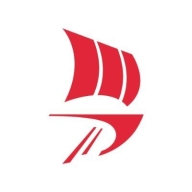

ClearSkies SaaS NG SIEM and Microsoft Sentinel are both prominent products in the NG SIEM market. Microsoft Sentinel appears to have the upper hand due to its comprehensive features and superior integration with existing tools.
Features: ClearSkies SaaS NG SIEM is valued for its advanced threat detection, real-time analytics, and competitive pricing. Microsoft Sentinel impresses with its integration capabilities, automation, and extensive security features.
Room for Improvement: ClearSkies SaaS NG SIEM users desire better scalability options, more extensive integration capabilities, and additional user training. Microsoft Sentinel users note a need for enhanced user training, more straightforward configuration processes, and improved scalability features.
Ease of Deployment and Customer Service: ClearSkies SaaS NG SIEM is praised for its straightforward setup and responsive customer service. Microsoft Sentinel offers a slightly more complex deployment but compensates with exceptional support resources.
Pricing and ROI: ClearSkies SaaS NG SIEM offers an affordable initial setup with a strong return on investment for smaller organizations. Microsoft Sentinel demands a higher initial cost but offers extensive functionality and long-term benefits, delivering superior ROI due to its advanced features and reliable performance.

ClearSkies™ Software-as-a-Service is a fast, robust, scalable and flexible Next Generation SIEM solution. It provides real-time correlation of log data combined with evidence-based knowledge of emerging threats and vulnerabilities, thus allowing the early detection of and response to targeted attacks and data breaches.
Microsoft Sentinel is a scalable, cloud-native, security information event management (SIEM) and security orchestration automated response (SOAR) solution that lets you see and stop threats before they cause harm. Microsoft Sentinel delivers intelligent security analytics and threat intelligence across the enterprise, providing a single solution for alert detection, threat visibility, proactive hunting, and threat response. Eliminate security infrastructure setup and maintenance, and elastically scale to meet your security needs—while reducing IT costs. With Microsoft Sentinel, you can:
- Collect data at cloud scale—across all users, devices, applications, and infrastructure, both on-premises and in multiple clouds
- Detect previously uncovered threats and minimize false positives using analytics and unparalleled threat intelligence from Microsoft
- Investigate threats with AI and hunt suspicious activities at scale, tapping into decades of cybersecurity work at Microsoft
- Respond to incidents rapidly with built-in orchestration and automation of common tasks
To learn more about our solution, ask questions, and share feedback, join our Microsoft Security, Compliance and Identity Community.
We monitor all Security Information and Event Management (SIEM) reviews to prevent fraudulent reviews and keep review quality high. We do not post reviews by company employees or direct competitors. We validate each review for authenticity via cross-reference with LinkedIn, and personal follow-up with the reviewer when necessary.